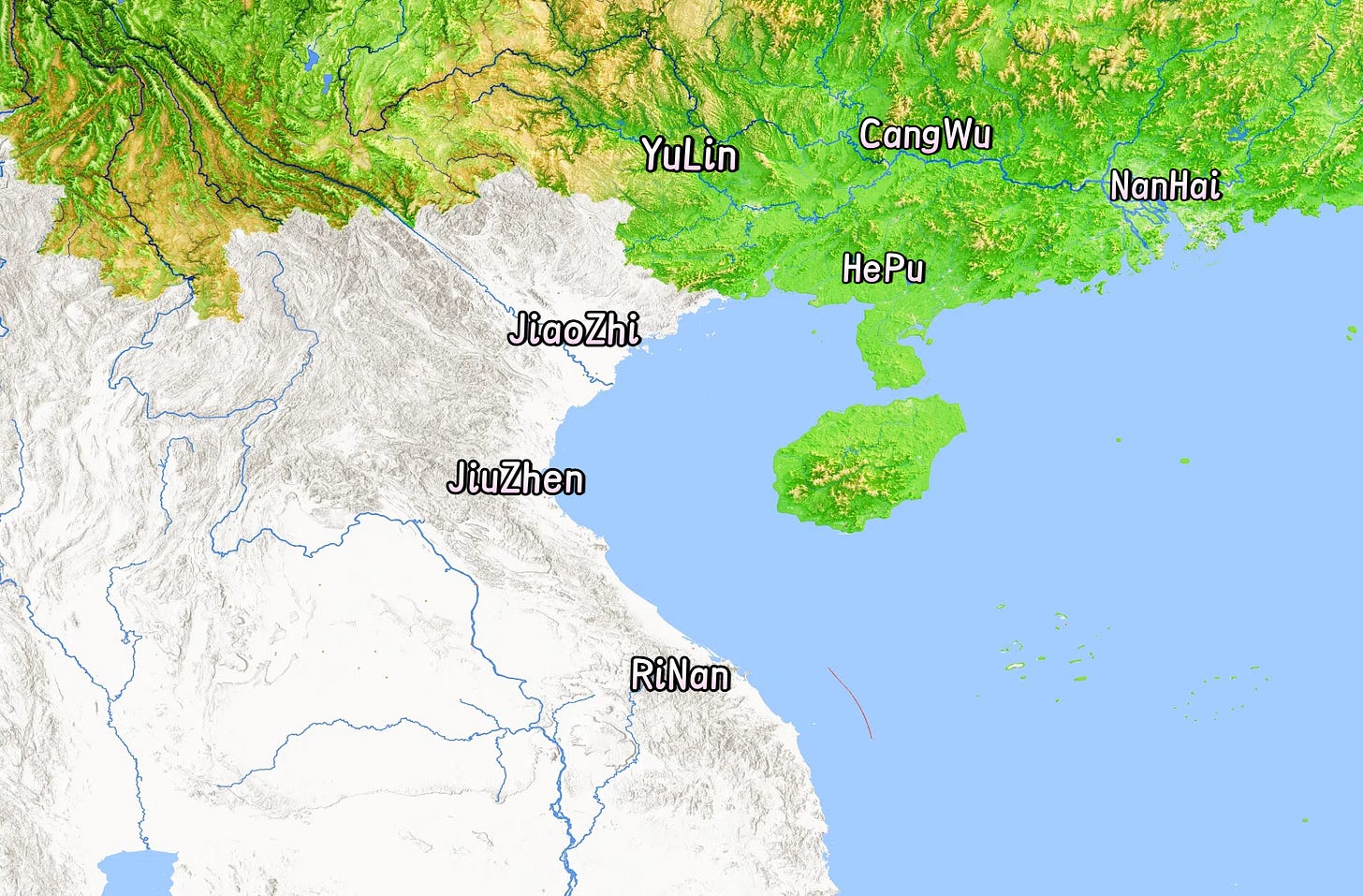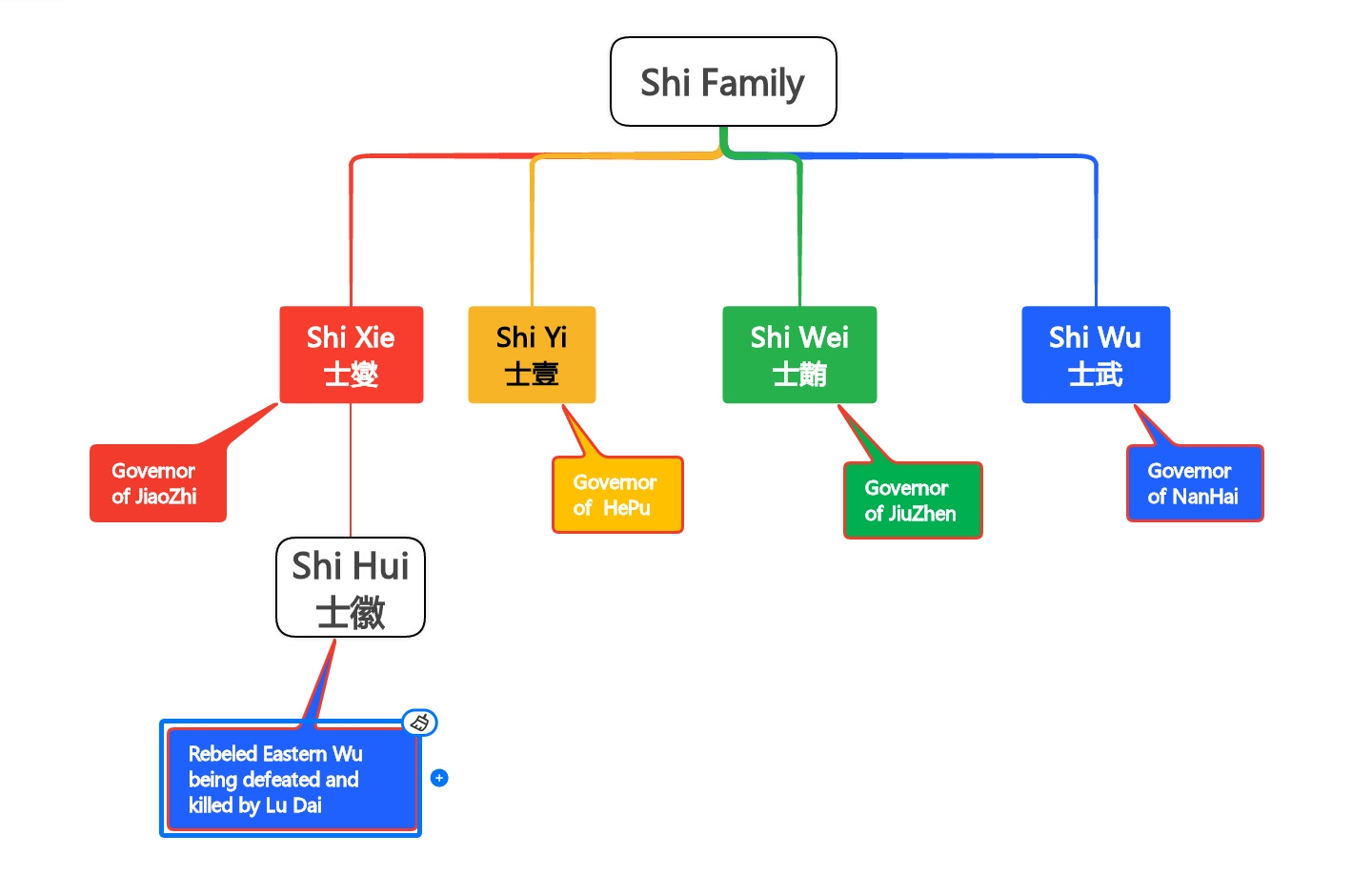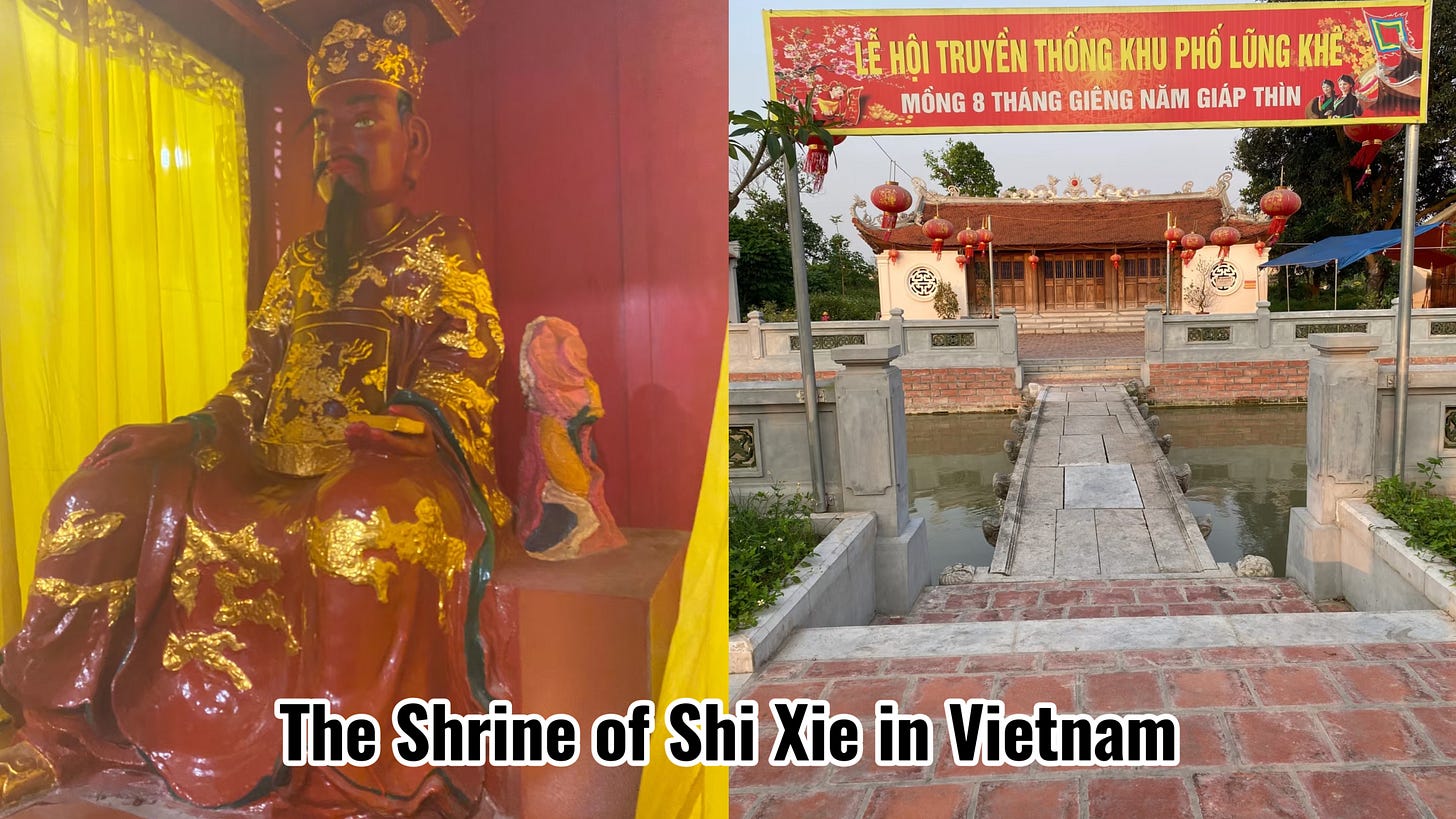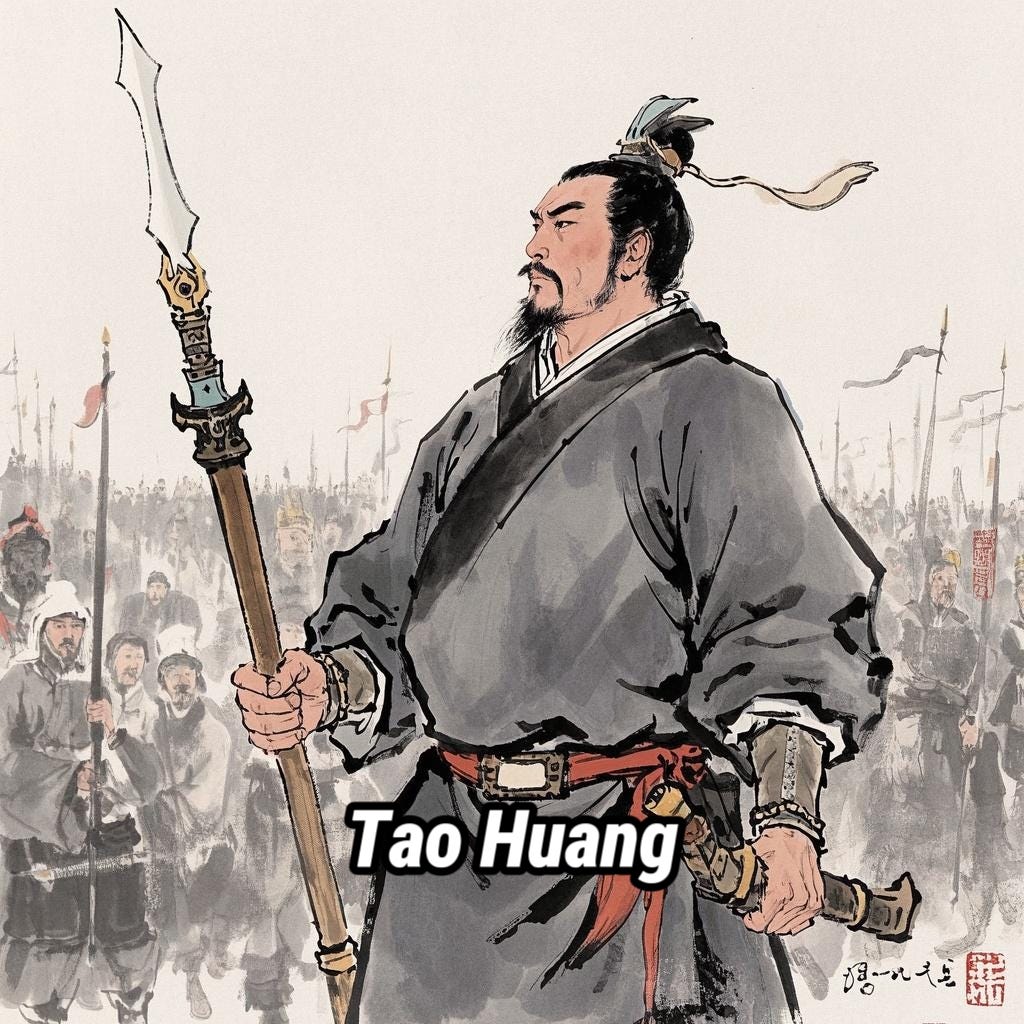Province of JiaoZhou(Introduction to Three Kingdoms Administrative Region Names 13)
Important Places of Three Kingdoms
Catalog of Three Kingdoms history
More Place Name of Three Kingdoms
Important Geographical Terms During the Three Kingdoms Period
On the historical stage of the late Han and Three Kingdoms period, Province of JiaoZhou交州 occupied a unique and significant position, much like a pearl embedded in the southern frontier of Ancient China, radiating distinct charm in politics, economy, culture, and more.
I. Geographical Location
JiaoZhou was located in the southern frontier of China, encompassing present-day Guangdong, most of Guangxi, and parts of central and northern Vietnam. It bordered JingZhou and YiZhou to the north, the South China Sea to the east, Kingdoms of Yelang夜郎 and Dian滇 to the west, and extended to the Indochina Peninsula to the south.
The region featured diverse terrains, with numerous mountains and hills, such as the Shiwan十万 Mountains and Yunkai云开 Mountains, forming natural military defenses. The fertile plains of the Zhu River珠江 and Red River红河 deltas were important agricultural areas. Numerous rivers traversed the region, providing convenience for water usage and transportation. The hot and humid climate was conducive to the growth of crops and wildlife, and the area was rich in mineral and marine resources.
II. Economic Development
Jiao Province's economy was diverse. The introduction of Central Plains agricultural techniques boosted production. In handicrafts, pearl harvesting and processing in Hepu were renowned, and there were developments in textiles and ceramics. Commercially, thanks to its strategic location as a key transit point between China and Southeast Asia, the port of Panyu番禺 (modern-day Guangzhou) thrived in foreign trade.
III. Details of the Commanderies in JiaoZhou
Nanhai Commandery: Covered parts of eastern, northern, central, and western Guangdong, with its capital at Panyu番禺, present-day Guangzhou. During the Three Kingdoms period, Nanhai Commandery was a crucial hub for trade between Jiaozhou, the Central Plains, and overseas. Under the rule of Shi Xie士燮, his brother Shi Wu士武 served as the Commanderial Governor of Nanhai, stabilizing the region and ensuring smooth trade, which promoted economic and cultural development. After Sun Quan ’s General,Bu Zhi步骘 , took over Jiaozhou, he used Panyu as a base to implement Eastern Wu's policies, further consolidating Nanhai's role as the economic center of Jiaozhou.
Cangwu苍梧 Commandery: Located in eastern Guangxi and western Guangdong, with its capital at Guangxin广信, near present-day Wuzhou, Guangxi, or Fengkai, Guangdong. This area was a key channel for the spread of Central Plains culture into JiaoZhou. Under Shi Xie's governance, Cangwu Commandery became an important node for cultural dissemination and material exchange due to its transportation advantages. Later, as tensions rose between Eastern Wu(222-280AD) and Shu Han(221-263AD), Cangwu became part of Eastern Wu's southern defense line, strengthening military defenses to prevent potential infiltration by Shu Han.
Yulin郁林 Commandery: Encompassed central, southern, and parts of western Guangxi. The region was mountainous and forested, with agriculture as the primary economic activity. During the Three Kingdoms period, the area was home to many ethnic minority groups, leading to periodic instability. After Eastern Wu took control of Jiaozhou, officials were sent to govern Yulin Commandery, enhancing control over the region and promoting the spread of agricultural techniques, which spurred development.
Hepu合浦 Commandery: Mainly included present-day Beihai, Qinzhou, Fangchenggang in southern Guangxi, and parts of Zhanjiang in Guangdong, with its capital at Hepu, in present-day Hepu County, Guangxi. Renowned for pearl harvesting and trade, it was a key node on the Maritime Silk Road. During the Shi Xie family's rule, Hepu's pearl trade reached its peak, with Shi Xie's brother Shi Yi士壹 serving as the Commanderial Governor of Hepu, leveraging the region's rich pearl resources to engage in frequent trade with the Central Plains and overseas, amassing significant wealth for JiaoZhou. After Lü Dai吕岱 quelled the rebellion of Shi Hui士徽, Hepu Commandery's status was stabilized, continuing to contribute to Eastern Wu's economic development.
Jiaozhi交趾 Commandery: Located in northern Vietnam, including Hanoi河内 and its surrounding areas, with its capital at Longbian龙编, east of present-day Hanoi. The region was developed early, with relatively advanced economy and culture. Shi Xie served as the Commanderial Governor of Jiaozhi himself for forty years, turning it into the political center of JiaoZhou. He promoted Confucianism, attracting many scholars from the Central Plains. After the Battle of Red Cliff, Shi Xie submitted JiaoZhou to Sun Quan, and Jiaozhi became the core region of Eastern Wu's control over JiaoZhou. Shi Xie actively implemented cooperative policies with Eastern Wu, fostering exchanges between Jiaozhi and other regions under Eastern Wu.
Jiuzhen九真 Commandery: Located in present-day Thanh Hóa清化, Nghệ An乂安, Hà Tĩnh河静, and Quảng Bình广平 provinces in Vietnam. The land was suitable for growing rice and other crops. During the Three Kingdoms period, Jiuzhen Commandery was under the rule of the Shi Xie family, and local agricultural production techniques improved under the influence of advanced practices from the Central Plains and Jiaozhi. As an important Commandery in southern JiaoZhou, Jiuzhen served as a communication and trade hub between Eastern Wu and surrounding regions.
Rinan日南 Commandery: Located in central and southern Vietnam. The region had a hot and rainy climate, with agriculture and fishing as the main economic activities. It was a frontier area for exchanges between China and Southeast Asia and South Asia. During the Three Kingdoms period, although remote, Rinan remained within Eastern Wu's administrative system. Eastern Wu attempted to expand overseas trade and influence through Rinan, sending envoys to neighboring countries, which strengthened Rinan's connections with the outside world.
IV. Major Events in JiaoZhou during the Three Kingdoms Period
Shi Xie's Rule and Submission to Eastern Wu: Shi Xie served as the Commanderial Governor of Jiaozhi交趾 for forty years, gradually gaining control over the whole JiaoZhou交州. He appointed his brothers as Governors of other Commanderies in JiaoZhou ,such as Hepu合浦, Jiuzhen九真, and Nanhai南海, establishing a de facto rule by the Shi family. After the Battle of Red Cliff, as the tripartite division of the realm became evident, Shi Xie wisely submitted JiaoZhou to Sun Quan, making it part of Eastern Wu's territory. This maintained relative stability and prosperity in JiaoZhou and facilitated exchanges in politics, economy, and culture between JiaoZhou and Eastern Wu.
Bu Zhi's步陟 Takeover of JiaoZhou: Sun Quan sent Bu Zhi as the Provincial Governor of JiaoZhou, leading troops to Panyu番禺. Upon arrival, Bu Zhi stabilized the region and implemented Eastern Wu's governance strategies, suppressing local opposition and strengthening Eastern Wu's control over Jiaozhou, laying the political foundation for its future development.
Lü Dai's吕岱 Suppression of Shi Hui's士徽 Rebellion: After Shi Xie's death, his son Shi Hui declared himself the Governor of Jiaozhi交趾 and rebelled against the new governor appointed by Eastern Wu. Lü Dai, under Sun Quan's orders, led three thousand soldiers on a swift campaign to quell the rebellion. He devised a plan to kill Shi Hui and his brothers, quickly suppressing other rebel forces, and fully integrating Jiaozhou into Eastern Wu's direct control, enhancing central authority over the region.
Eastern Wu and Shu Han's Struggle for JiaoZhou (Indirectly Related): In the Battle of Yiling夷陵(222AD), launched by Liu Bei to avenge Guan Yu, one of the strategic goals was to seize JiaoZhou and expand Shu Han's influence in the south. However, Liu Bei's defeat meant that Shu Han's forces withdrew from the contest for JiaoZhou, leaving it under Eastern Wu's control and maintaining Eastern Wu's strategic position in the south.
Tao Huang's陶璜 Defense of JiaoZhou: In the late Three Kingdoms period, during the Western Jin's(265-317AD) campaign against Eastern Wu, JiaoZhou became a key battleground. The mighty general Tao Huang led Eastern Wu's forces in defending JiaoZhou, using his military expertise and knowledge of the terrain to repel multiple Jin offensives. He actively recruited soldiers, built defensive structures, and pacified the local population, keeping JiaoZhou under Eastern Wu's control for a time and delaying the Western Jin's unification of the south.
During the late Han and Three Kingdoms period, JiaoZhou, with its unique geography, complex politics, thriving economy, and diverse culture, left a significant mark in Chinese history, serving as an essential case study for understanding the development of the ancient Lingnan岭南 region.
To be Continued.
Your support is my greatest motivation!









